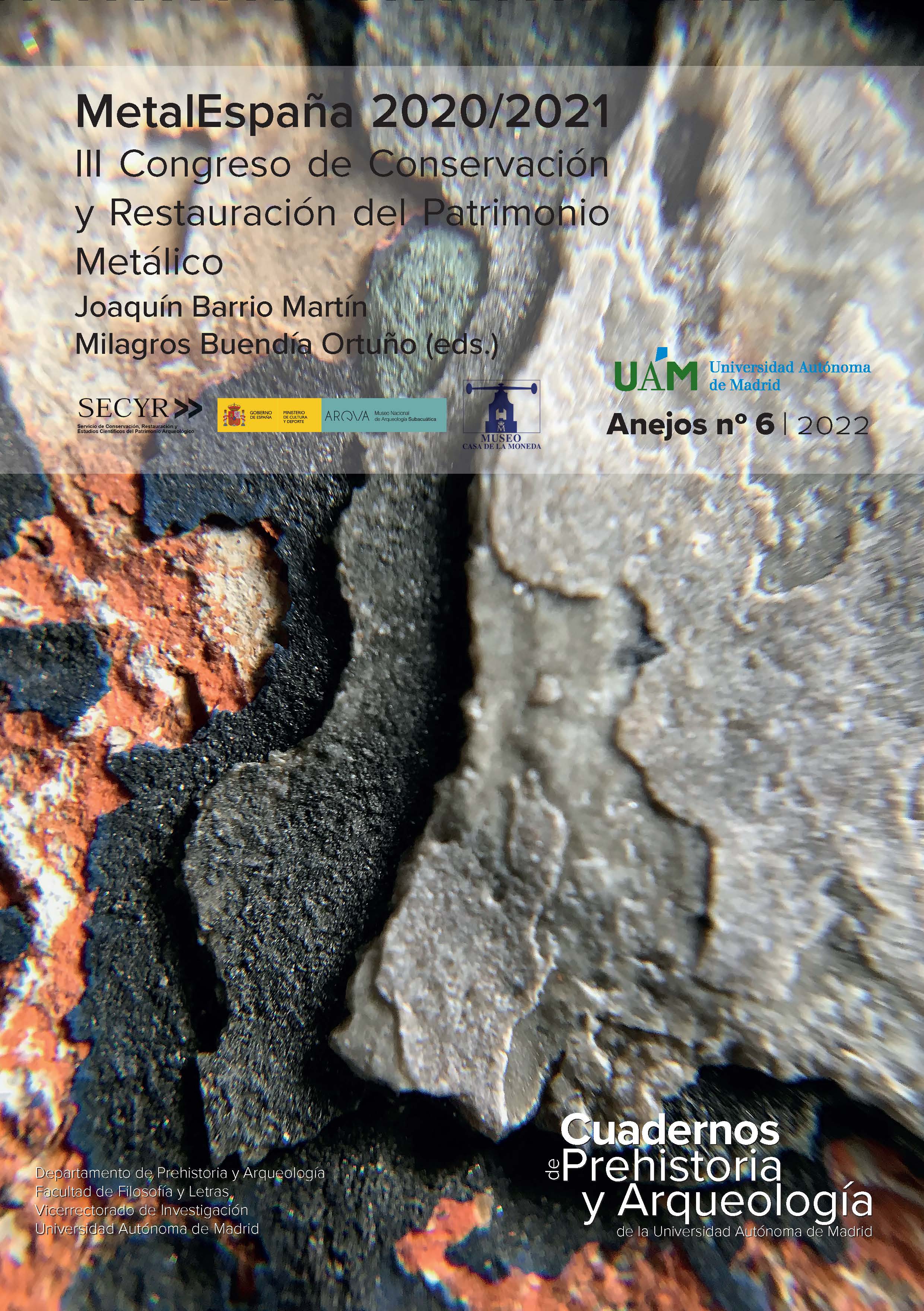Study, characterization and diagnosis of a pewter dish of underwater provenance deposited in the Cadiz Museum
Keywords:
peltre, corrosión, arqueometría, arqueología subacuática, cádizAbstract
Pewter, an allow primarily composed by tin, and other metals in lower percentage, has been used onboard life in ships since the XVI century, making this material very present in subaquatic archaeological sites. A good example is a pewter dish owned by the Cádiz Museum, which was deposited in 1982, and object of the present study. Optical Microscopy (MO), Scanning Electron Microscopy (SEM) with Energy Dispersive X-ray analysis (EDX) and X-ray Diffraction analysis (XRD) were used to determine its elemental
composition and corrosion products. The scientific data obtained, in combination with bibliographical, and documental research, allowed to characterized a specific type of pewter which composes in the dish, and so-called fine pewter. Different tin oxides, like romarchite and cassiterite, were identified as pewter corrosion products. These data enabled to elaborate a complete diagnostic study of this object and to advance in the knowledge of the alteration processes of pewter found in subaquatic sites.
Downloads
References
Angelini, E., Grassini, S. y Tusa, S. (2013): “Underwater corrosion of metallic heritage artefacts”. Corrosion and Conservation of Cultural Heritage Metallic Artefacts. European Federation of Corrosion (EFC) Series, 65. Oxford: 236-259.
Carlin, W. y Keith, D.H. (1997): “On the treatment of pewter plates from the wreck of La Belle, 1686”. The International Journal of Nautical Archaeology, 26 (1): 65-74.
Casabán, J.L., San Claudio, M., González, R. y Castro, F. (2013): “El pecio de Punta Restelos. Un buque de la Armada de 1596”. I Congreso de Arqueología Náutica y Subacuática Española. Cádiz: 233-243.
Cronyn, J.M. (1990): Elements of Archaeological Conservation (1st ed.). Routledge. London.
Dunkle, S.E., Craig, J.R., Rimstidt, J.D. y Lusardi, W. (2003): “Romarchite, hydroromarchite and abhurite formed during the corrosion of pewter artifacts from the Queen Anne’s Revenge (1718)”. The Canadian Mineralogist, 41: 659-669.
Macleod, I.D. y Wozniak, R. (1997): “Corrosion and conservation of tin and pewter from sea water”. Metal 95: Proceedings of the international conference on metals conservation, Semur-en-Auxois, 25-28 September 1995. London: 118?123.
North, N.A. y Macleod I.D. (1987): “Corrosion of Metals”. En C. Pearson (ed.): Conservation of Marine Archaeological Objects. London: 68-98.
López de la Orden, M.D. (2005): “Objetos de vida cotidiana”. En A. Álvarez Rojas (coord.): Cádiz y Trafalgar: la ciudad ilustrada de 1805. Consejería de Cultura de la Junta de Andalucía. Sevilla: 122?123.
Weinstein, R. (2011): The Archaeology of Pewter Vessels in England 1200-1700: A Study of Form and Usage. Tesis doctoral. Durham University.
Ryck, I.D., Biezen, E.V., Leyssens, K., Adriaens, A., Storme, P. y Adams, F. (2004): “Study of tin corrosion: The influence of alloying elements”. Journal of Cultural Heritage, 5: 189-195.


